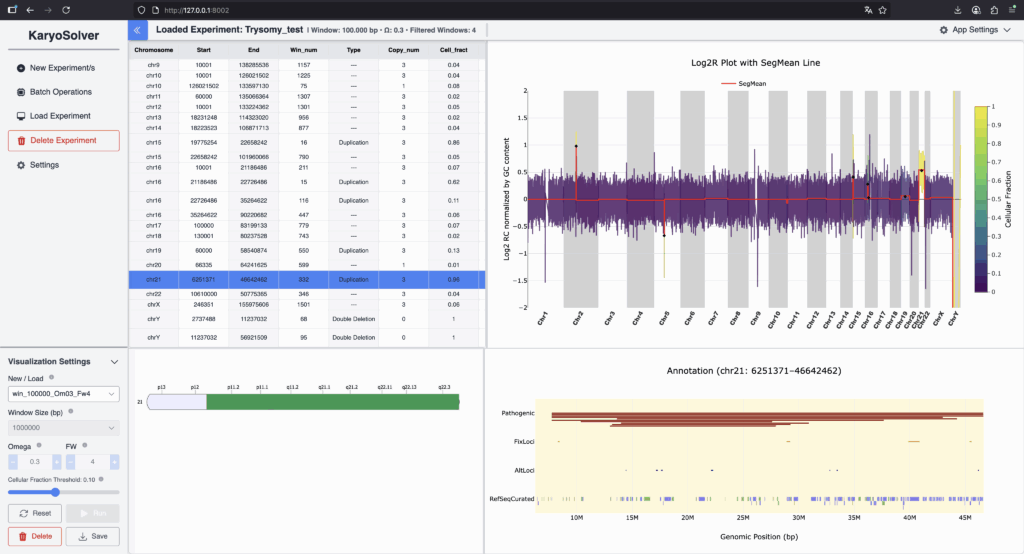
KaryoSolver was born from the need to make molecular karyotyping faster, clearer, and more reliable.
Traditional workflows often slow down labs with complex tools and inconsistent reporting. Our goal was to create a platform that transforms raw array or NGS copy-number data into clinically meaningful insights — quickly and with full ISCN compliance.
The project has been proudly developed in collaboration with the group of Prof. Magi at the University of Florence, combining technological innovation with deep expertise in medical genetics.
KaryoSolver is not just a tool, but part of a broader vision: to empower diagnostic laboratories with solutions that ensure accuracy, traceability, and confidence in every clinical decision.
Key outcomes

Core capabilities
Use cases